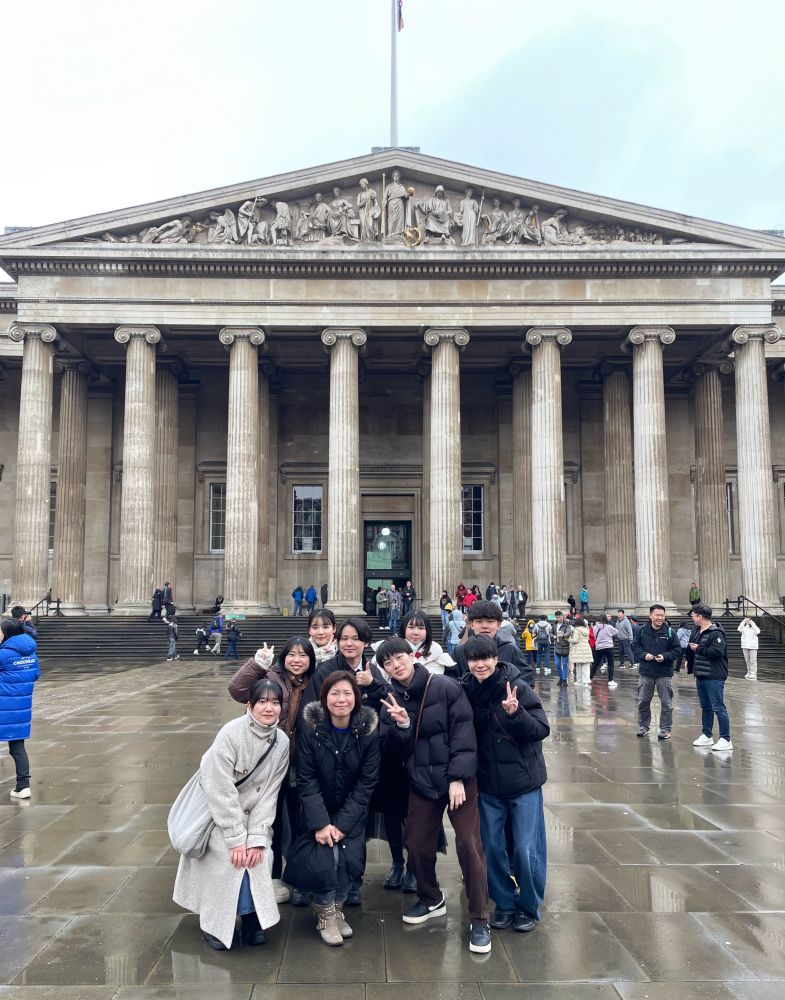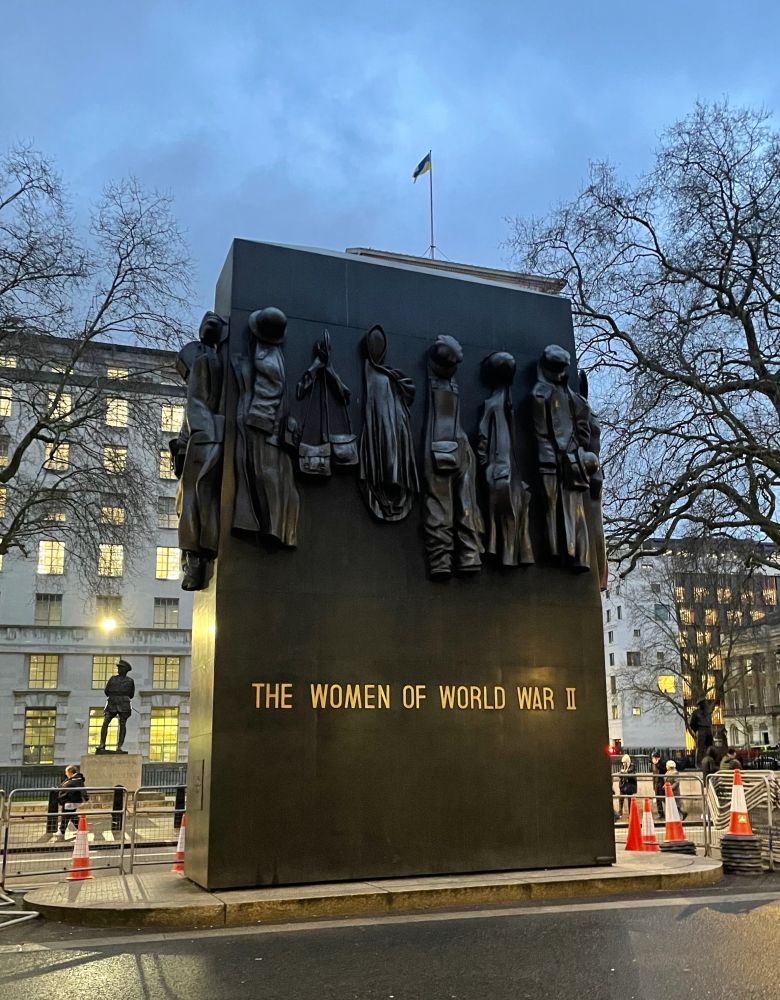2025.03.19
News
Global Study Trip by Students of Faculty of Commerce: Learning about the UK Today
The Faculty of Commerce offers a distinctive global education program, ‘Global Fields Studies’, conducted during year-long research seminars.
Students from the ‘Global Liberal Arts Seminar (Professor Yumiko Fukunishi) at the Faculty of Commerce’ visited London from January 29th to February 4th, 2025, to explore the actual conditions of the UK’s present. ※ The travel expenses for this study trip were partially covered by the ‘Distinctive Faculty Education Aid’ provided by the Faculty of Commerce, Chuo University.
The Global Liberal Arts Seminar aims to develop students’ skills to collaborate with individuals from diverse linguistic and cultural backgrounds in the future. We believe this is achieved by deepening their understanding of global languages, history, and cultures and studying related businesses and social activities.

In front of the British Museum

War memorials alongside Whitehall in London

At the East Japan Railway Company London Office
Study Report
Purpose of the Study Trip
Throughout the year-long seminar, we took a multifaceted approach to British society after World War II, looking at it from the perspectives of politics, economics and culture, and the seminar students wrote seminar papers based on their interests. This study trip aimed to gain a deeper understanding by checking the latest facts related to each student’s research theme on location and comparing their theoretical knowledge with the actual situation.
Their research paper themes cover various topics, including; ‘British War Memorials: Modern Society and the Woven Past Memory’, ‘A Study of Mary Poppins: The Social Role of Nannies during the 1930s England’, ‘The Relationship between the British People and Nature as Seen through the Lens of the Picturesque’, ‘The History of the Development of Japanese Railways Influenced by Britain: Focusing on the Differences between Britain, the Birthplace of Railways, and Japan, with “possesses the “World’s Best Technology”’, etc.
Findings
Alongside Whitehall in London, the street lined with the central ministries and government buildings that form the heart of the British Government, as well as war memorials and statues, are also located. We observed up close the monument ‘The Women of World War II’, which honours over 7 million British women who had engaged in World War II and confirmed its unique (and huge) emphasis on femininity. We also looked back at the historical background of the many war memorials erected across the country following World War I, including ‘The Cenotaph,’ and how these memorials reflected the society of the time. In particular, we considered the impact on society of the memorials mentioned above, symbolising women as an antithesis to the traditional image of war as a male-dominated activity from various perspectives, including gender.
We visited the mansion in South Kensington (50 Smith Street) where Pamela Lyndon Travers, Mary Poppins's author, lived. This mansion is the model for the Banks family that appears in the story. She published her first work, Mary Poppins, in 1934 and went on to write a total of 8 works by 1988. Among them, the class society of 1930s England and the role of nannies in middle-class households are highlighted. By visiting the mansion and its surrounding area, we gained a new perspective on the role given to Mary Poppins.
At the National Gallery, we viewed many masterpieces, including works by Joseph Mallord William Turner, an essential artist for considering the concept of British picturesque. We also visited the studio and house (Kelmscott Manor House) of William Morris, a 19th Century English textile designer, poet, author and key figure of the Arts and Crafts movement, who was strongly influenced by the picturesque and later visited the Victoria & Albert Museum, where we had the opportunity to see some Morris’s actual works.
The company also focuses on promoting traditional Japanese crafts overseas and carries out PR activities at places such as the Japan House in London. According to Director Nagawa, traditional crafts sometimes find new uses overseas, and there are surprising differences in how Japanese people think, such as the use of sake cups as espresso cups or balsamic vinegar holders. It is fascinating to witness such dramatic shifts in ideas.
When asked about the future of autonomous driving with the trend towards labour-saving, the manager explained that the company has already introduced autonomous driving technology in the switching operation of the Yamanote, Keihin-Tōhoku, and Shinkansen lines. However, the regulations differ between Britain and Japan. While in Britain, no person is required to be present when the autonomous door closes, in Japan, it is considered essential. In this way, the differences in systems and cultures became clear.
We also visited (1) facilities connected to local consumer life, such as Portobello Road Market and retail stores, (2) the Bodleian Library and Christ Church College at Oxford University to learn about the forefront of British higher education, and (3) several distinctive museums such as the British Museum, The Science Museum, London, The Natural History Museum, and the National Maritime Museum.
To conclude the study tour, we took the DLR (Docklands Light Railway), an automated train that connects central and eastern London (Manager Soma of the JR East London office warned us that the train would depart even if a person were caught in the doors!), visited the Royal Observatory Greenwich via Canary Wharf, which is home to Europe’s largest cluster of skyscrapers, and then took a ferry to the City, the historic financial district. Through these visits, the students experienced the new aspects of modern British society and further deepened their previous research from their perspective.
